Updated 6/20/2023. This quick guide will introduce you to some of the best muralists who have worked in Lisbon and help you figure out where to see street art in Lisbon.
Some of the world’s best muralists in Lisbon
Alexandre Farto, also known as Vhils, hails from across the river in the town of Seixal. Vhils drills, and often carves into walls.
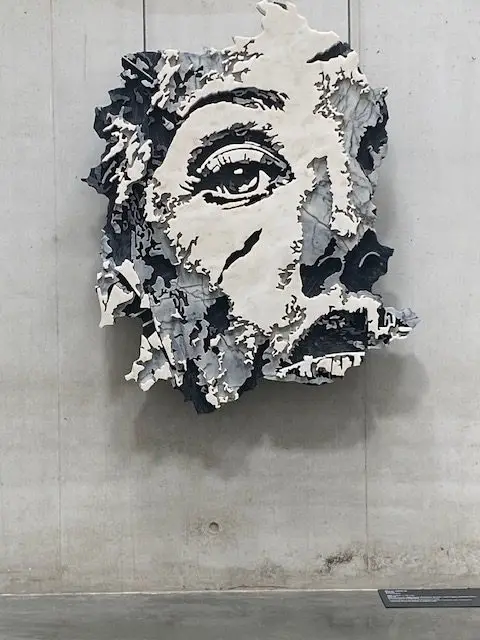
This marble carving by Vhils, known as “Petra,” hangs at the Museu Nacional dos Coches.
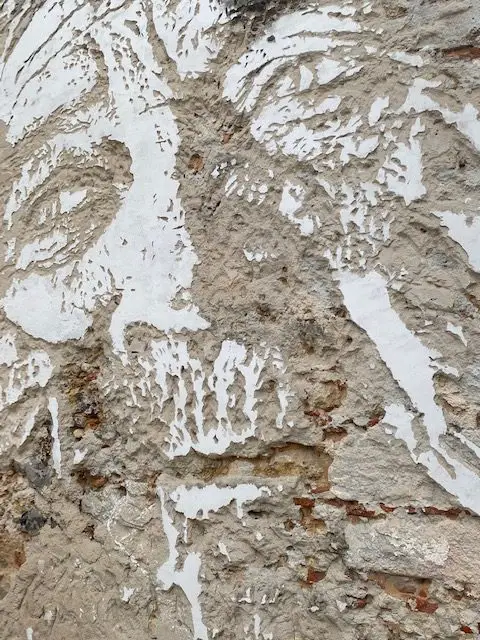
One of his first works is this carving of a man’s face in a hidden alley – Travessa das Merceeiras, behind the Lisbon Sé Cathedral.
Another of his most popular works is nearby. Approximately 50 meters uphill from the Miradouro das Portas do Sol viewpoint, across the street and hidden behind a bus stop is this stunning cobblestone portrait of local Fado music legend Amália Rodrigues.
Vhils collaborated with Lisbon’s master stonemasons on this project, which was finished in 2015. For more information on cobblestone art in Lisbon, read my article Portuguese pavement: Black and white cobblestones in Lisbon
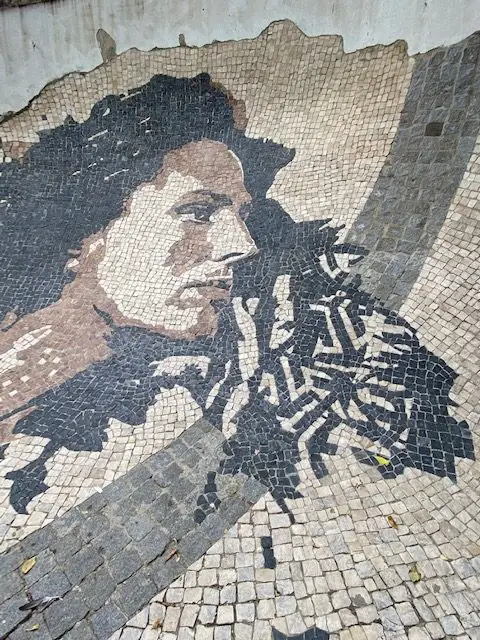
Vhils also collaborated with American artist Shepard Fairey (famous for the Obama Hope image and his OBEY campaign). The duo combined forces to paint Universal Personhood with each artist doing half of the face. This mural takes up the side of a building at Rua Senhora da Glória.
Shepard Fairey’s most famous piece in Lisbon is located nearby at Rua Natália Correia. His Peace Guard Lisboa honors the Carnation Revolution of April 25, 1974, ending the dictatorship and returning democracy to Portugal.
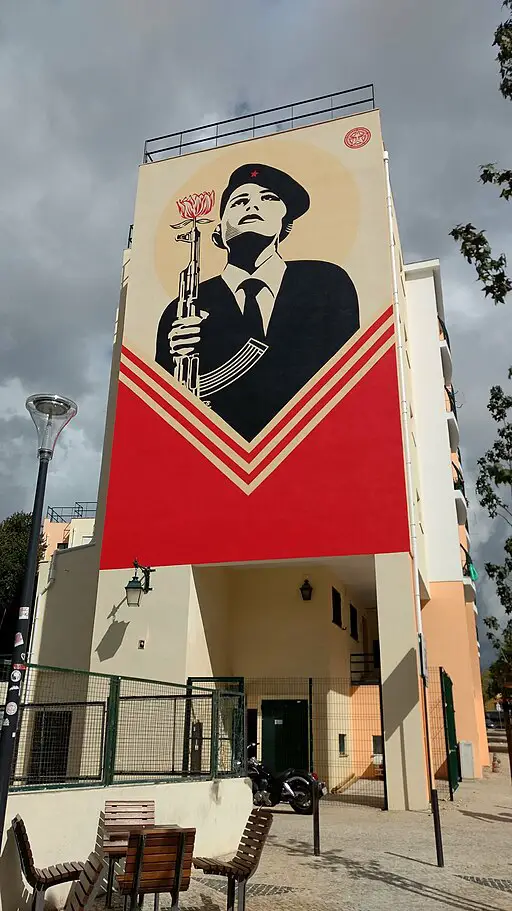
During the peaceful revolution, demonstrators placed carnations on the lapels of soldiers, and into the barrels of their rifles.
Bordallo II, or Artur Bordal, is a local plastic artist who largely designs works out of recycled materials. He has been creating large animals all over Lisbon for years.
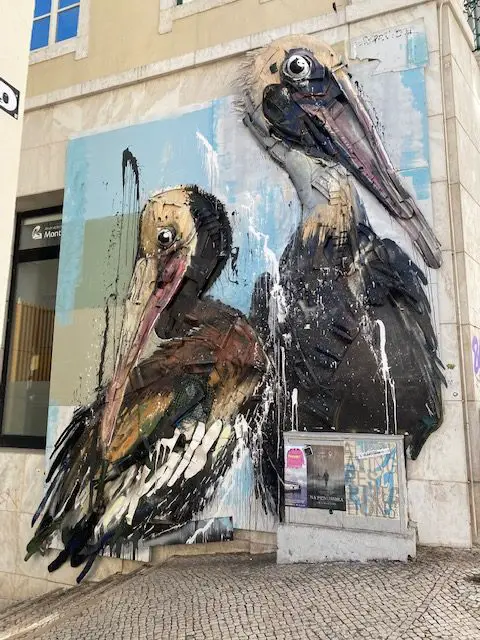
His large pelicans are right behind the Elevador Santa Justa in the Baixa neighborhood.
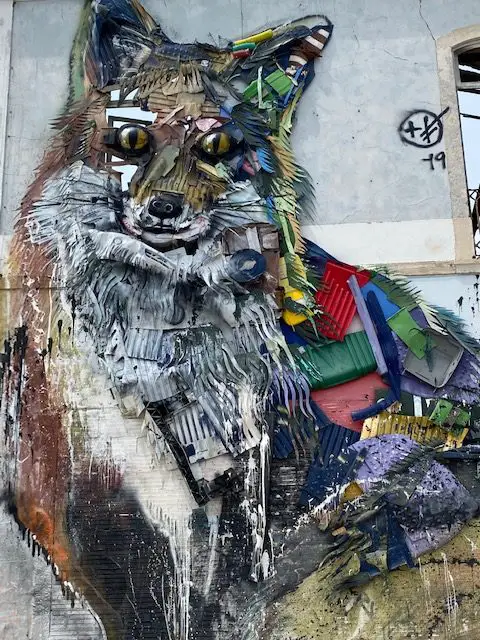
You can find his giant fox one full block west of the Time Out Market in the Cais do Sodré neighborhood. For more information on the Time Out Market, read my article Lisbon’s Time Out Market | Everything you need to know
Bordallo II created a big raccoon as well. It lives at Rua Bartolome Dias, 43, between the Belém Tower and the Jerónimos Monastery. Go around the back side of the Belém Cultural Center.
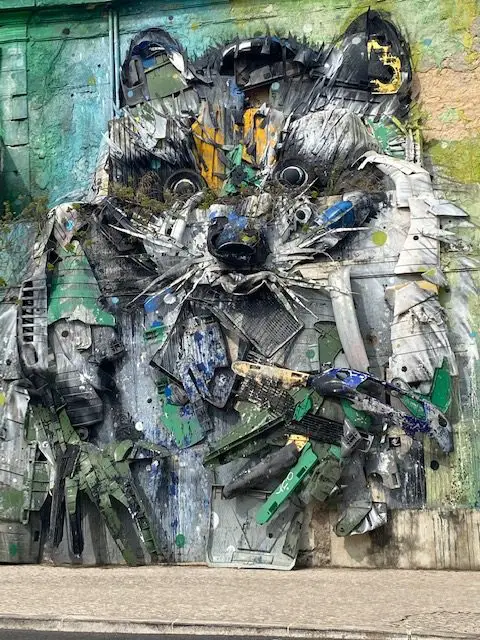
If you’re heading to the National Tile Museum in the Xabregas neighborhood, you might see his workshop at Rua de Xabregas, 49, which has a large monkey climbing the wall. https://www.bordaloii.com/work

You can also stop by the 1908 Hotel at Praça da Intendente (metro green line), and in the lobby, you’ll find Bordallo II’s Dragonfly.
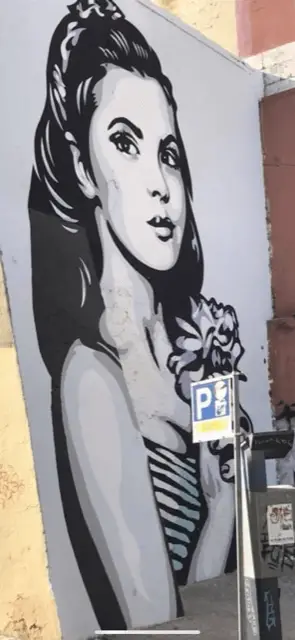
See street art in Lisbon in Alfama
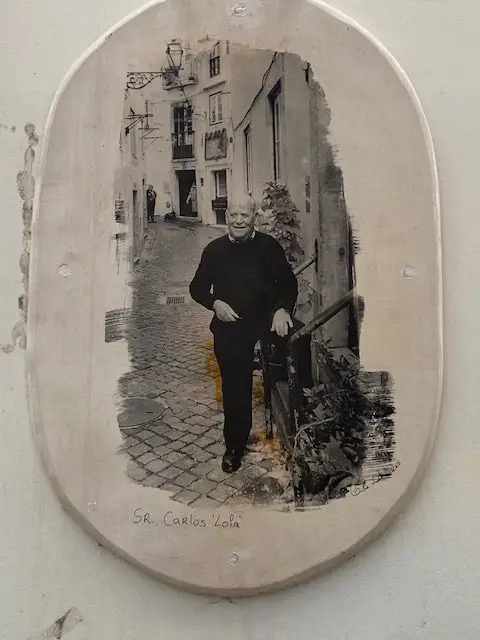
As you wander the back alleys of Alfama, you will come across portraits of some of the neighborhood’s elderly residents. The 40 works scattered throughout the neighborhood were done by British artist Camilla Watson as part of her project “Alma de Alfama” (Soul of Alfama).
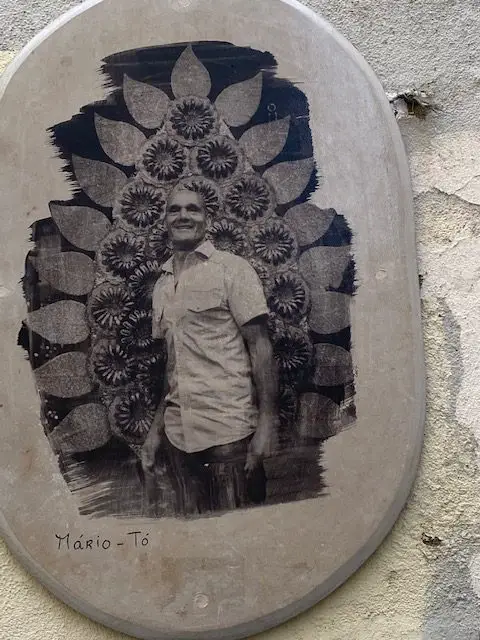
For more information: https://www.camillawatson.com/alma-de-alfamasoul-of-alfama
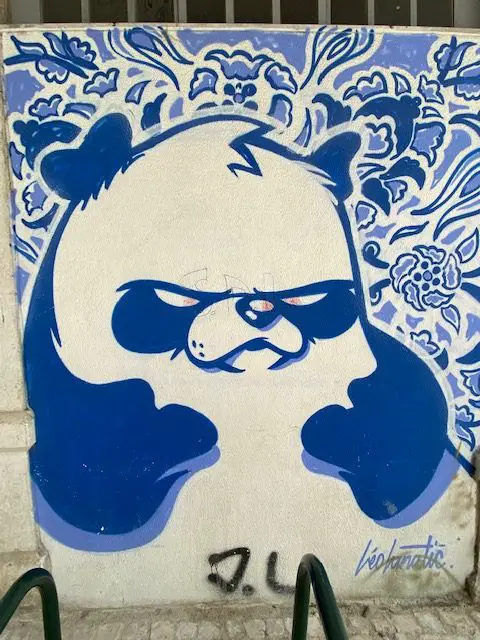
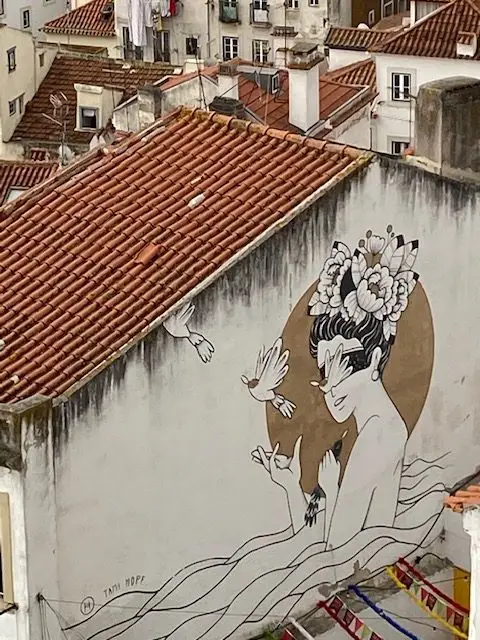
The Lisa mural by Brazilian artist Tami Hopf was created in 2016. Her website is Tami Hopf / Hopf Studio This portrait of a lady in black, white, and tan is one of the most viewed murals in Lisbon, given its location at one of Lisbon’s most popular scenic Viewpoints – the Miradouro das Portas do Sol.
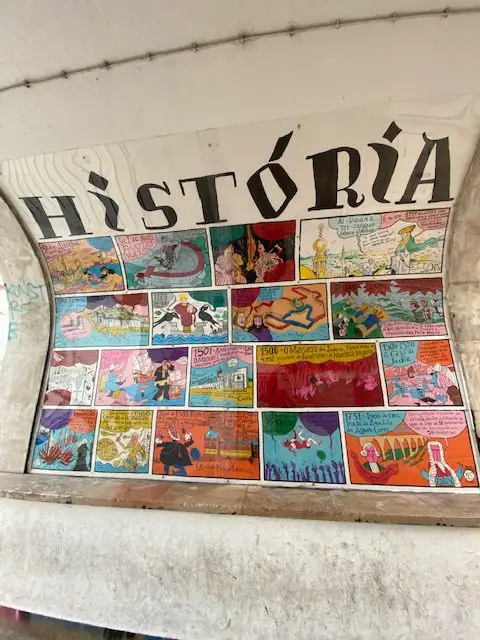
Practically next door, a few feet downhill from the Miradouro de Santa Luzía, you will find the cartoon “Historia de Lisboa” by local artist Nuno Saraiva. He created the piece in 2016.
For more information on Nuno Saraiva, visit his Instagram Nuno Saraiva (@nunosaraiva_ilustrador) • Instagram photos and videos
See street art in Lisbon at the LX Factory
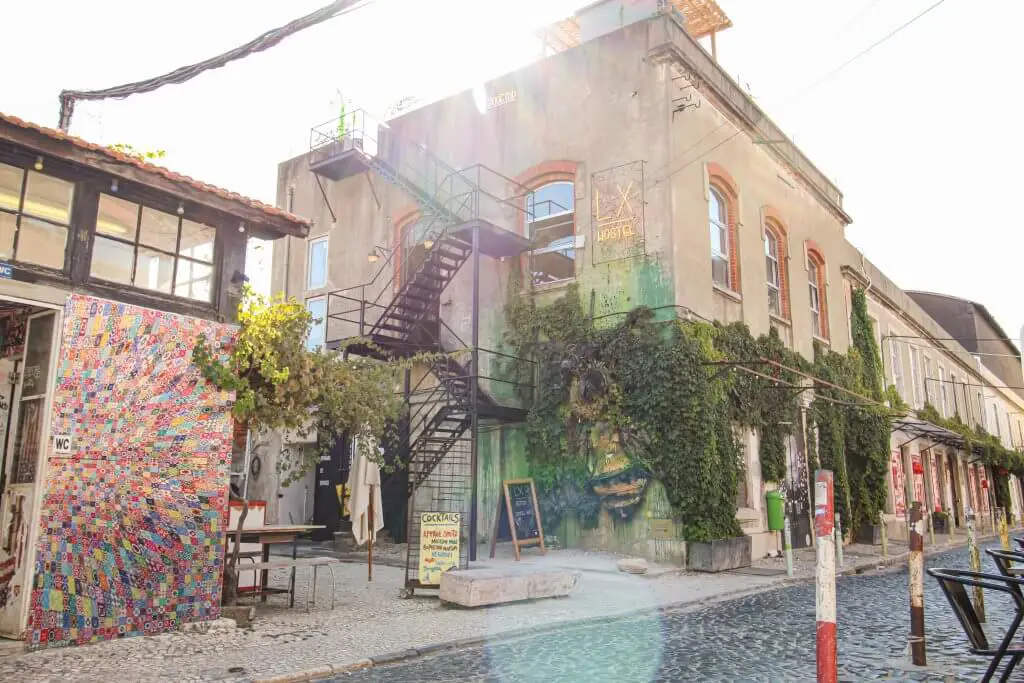
The LX factory is one of Lisbon‘s coolest areas. For more information, read my article Is the LX Factory worth visiting?

These former warehouses and industrial buildings have become hip restaurants and shops. The property is filled with various art installations, including this Multidimensional bumblebee created by Bordallo II.
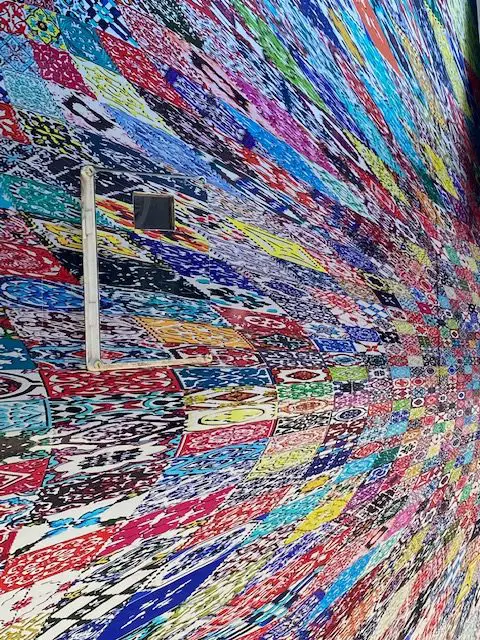
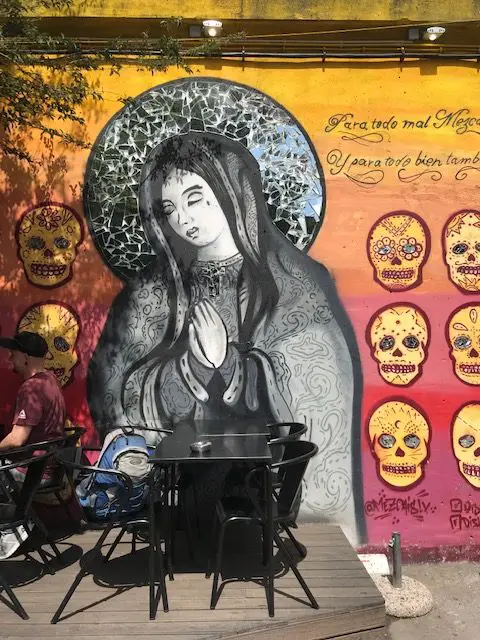
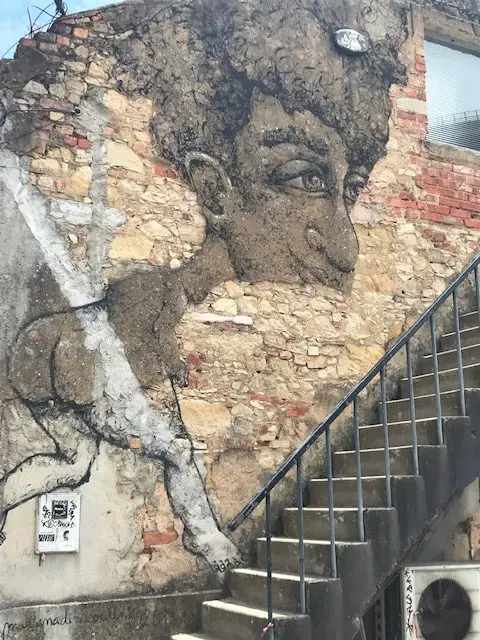
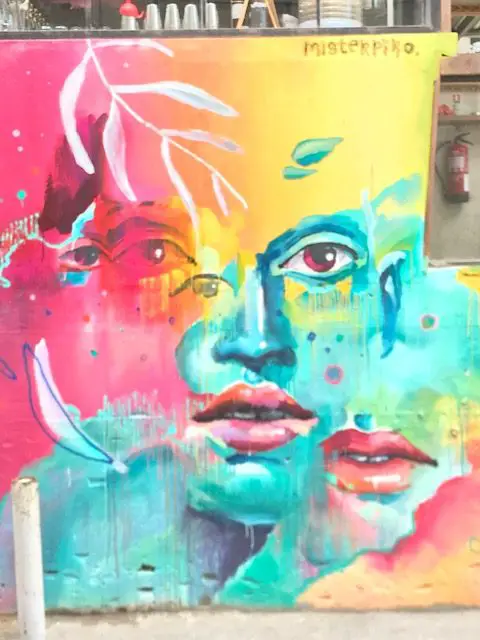
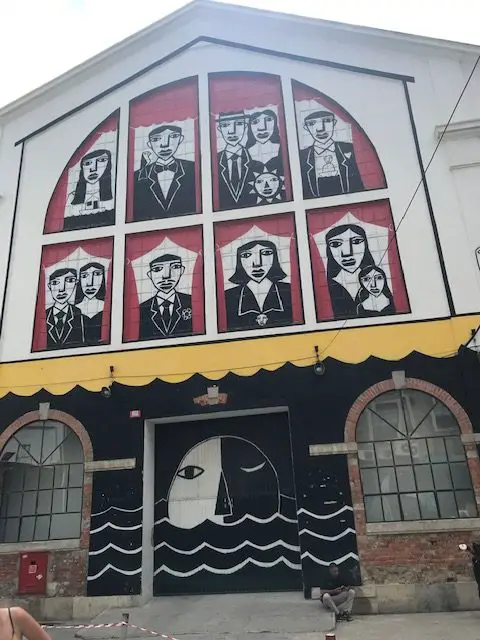
One of my favorite shops at the LX factory is the Ler Devagar (which in English is Read Slowly) bookstore.
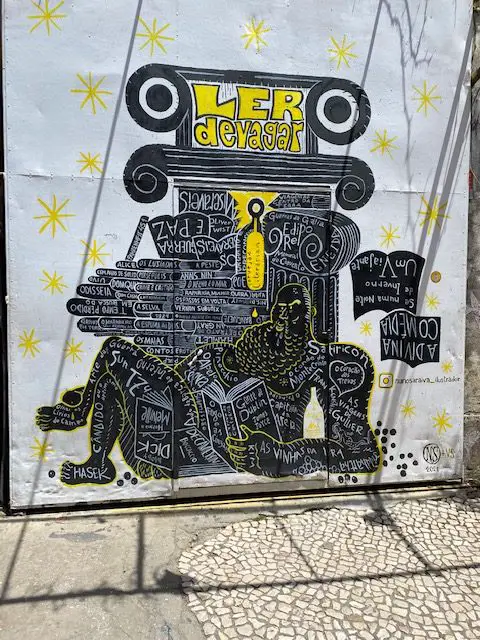
The bookstore is housed in a former print shop, and the original printing press sits in the center of the room. Visitors will also enjoy the bicycle suspended from the ceiling. If you are into bookstores, check out my 7 great bookstores in Lisbon
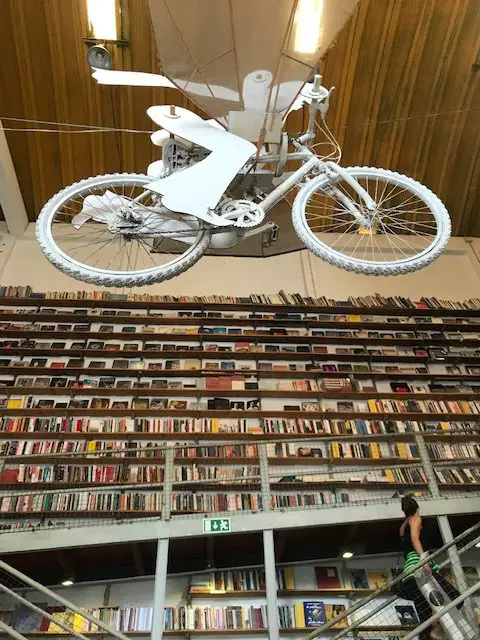
Near the LX Factory, you will find the Village Underground. This colorful collection of railroad shipping containers and buses has been re-purposed and turned into co-op work spaces, shops, and restaurants.
The village underground is located just north of Avenida Brasília and just east of the April 25 Bridge.
Murals at Fábrica Braço de Prata
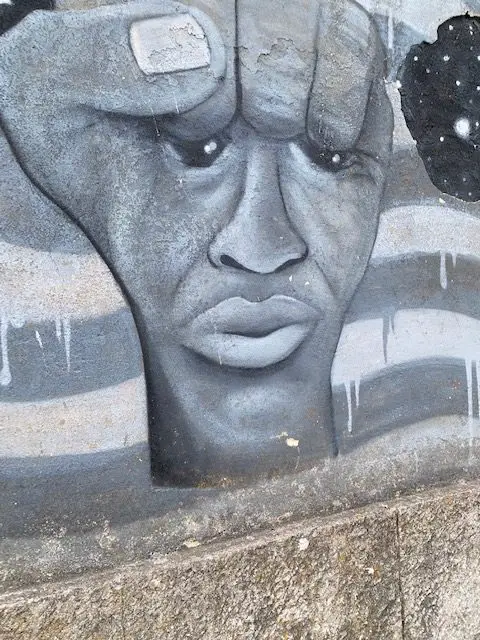
Fábrica Braço de Prata – The Silver Arm Factory, is an artsy community center in the northwest of Lisbon. Creative people will enjoy this facility, formerly a weapons factory.

The colorful space now offers a bar and restaurant, a collection of used books, a restaurant with outdoor seating, artist workshops, RV camping, a variety of live music, and of course some interesting murals.
For more information, see their website, https://www.bracodeprata.com/
Street Art in Lisbon at the Ascensor da Gloria
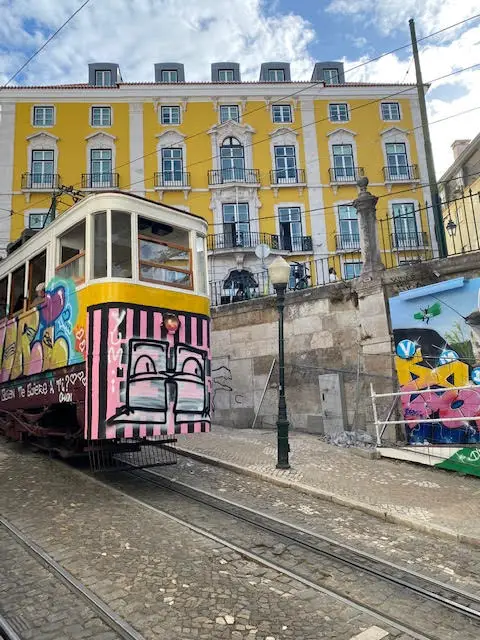
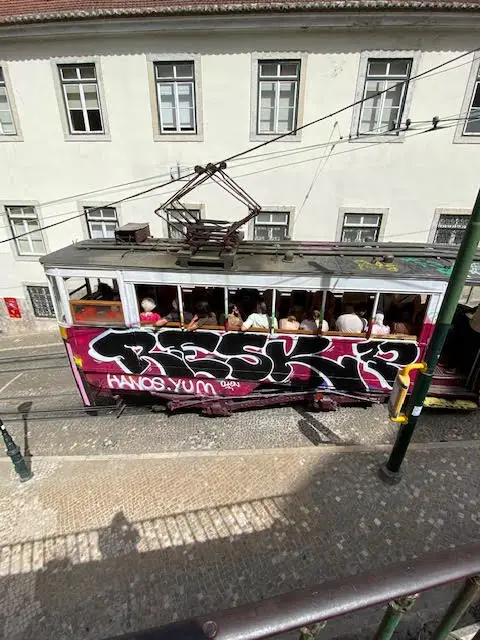
They even painted the Elevador da Glória funicular!
History of street art in Lisbon
Lisbon has always been a visually appealing city.
Portugal is famous for the black and white cobblestones mosaics, the Calçada Portuguesa, which were first used at Castelo de São Jorge.
Then the cobblestone patterns made their way down to Rossio Square – Lisbon’s most famous pavement project.
There is the ornate Manueline Architecture from the Portuguese Age of Discovery.
Then there is the Pombaline architectural style of the late 1700s as Lisbon rebuilt from the earthquake.
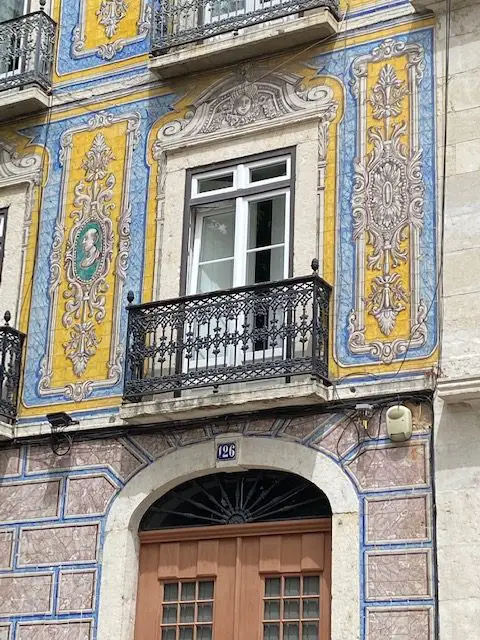
As they rebuilt after the earthquake, people began to use colorful ceramic tiles on the exterior of buildings. It was attractive and it protected against moisture. See my article Lisbon’s tiled houses – A tradition you will love
In the turbulent years following the 1974 Carnation Revolution that saw the end of an oppressive dictatorship, young people began to express themselves by tagging and scribbling on walls.
Financially times were tough in 20th-century Portugal. Neither the city nor property owners had money to repaint walls.
The city decided on a simple solution. If you can’t beat them, join them. The city decided to condone and support actual works of street art.
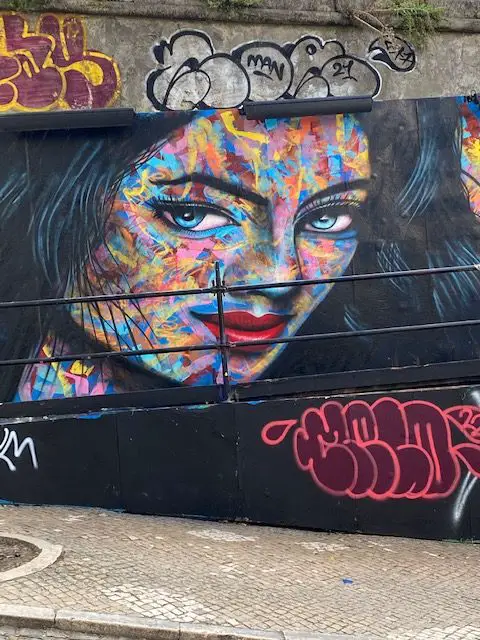
Many of the pieces are sponsored by the city.
Galleria de Arte Urbana (GAU) begin trying to create partnerships between the city of Lisbon and internationally known urban artists in 2008.
The idea was to beautify abandoned buildings and cut down on lesser-quality vandalism by promoting works of art.
Galeria da Arte Urbana continues to sponsor murals at the Calçada da Glória, where the Ascensor da Glória carries visitors up a steep hill. Even the funicular itself gets painted by local and international artists.
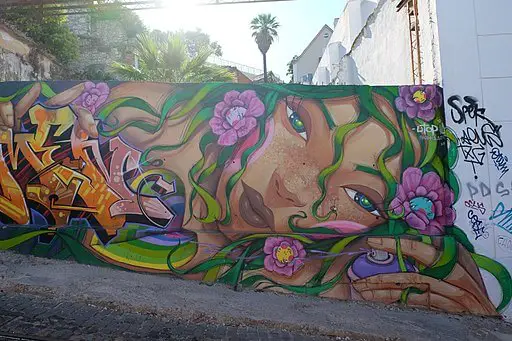
Based in Madrid, Italian Newpolitan Street Artivism has this black, white, and yellow piece at Calçada da Glória.
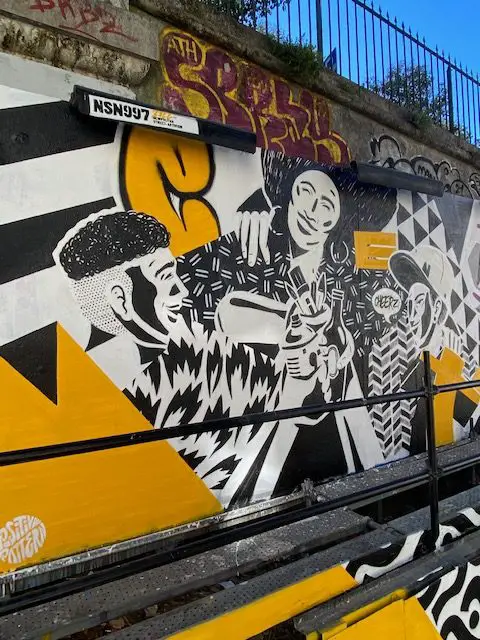
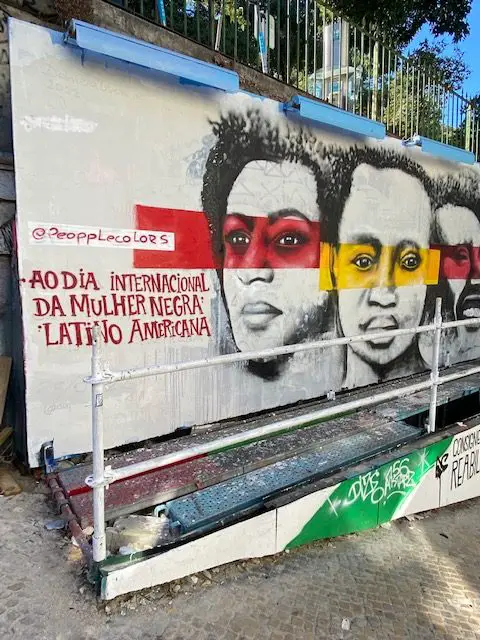
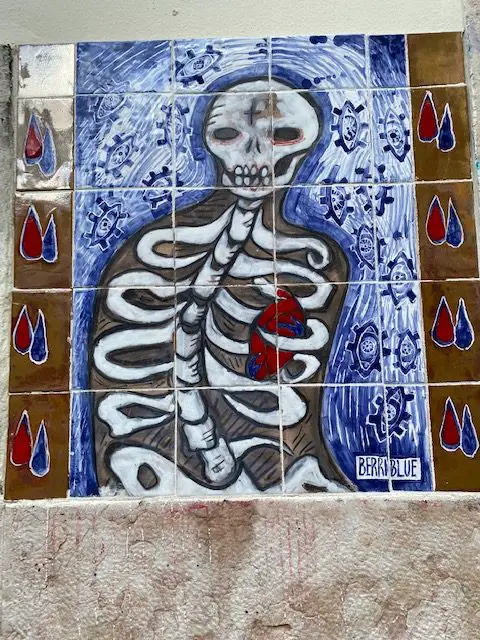
This azulejo tile piece dealing with mortality is located on Calçada da Glória. Polish – Irish female artist BerriBlue is based in Porto. For more information on BerriBlue: https://www.berriblue.com/?locale=en
Artists have also decorated the Ascensor do Lavra – Lisbon’s oldest funicular, east of Avenida da Liberdade.
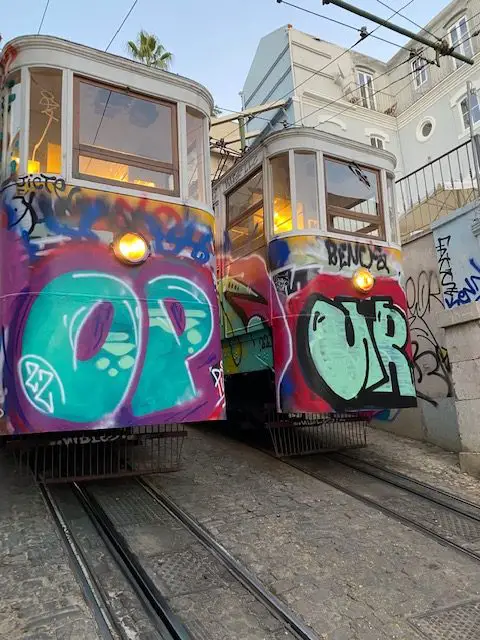
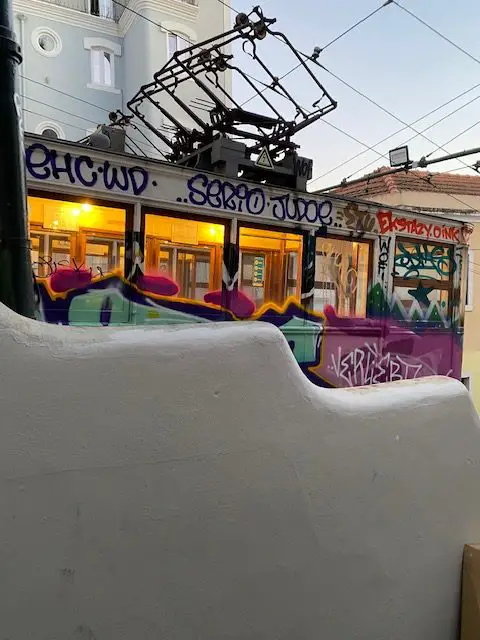
Murals are everywhere in Lisbon
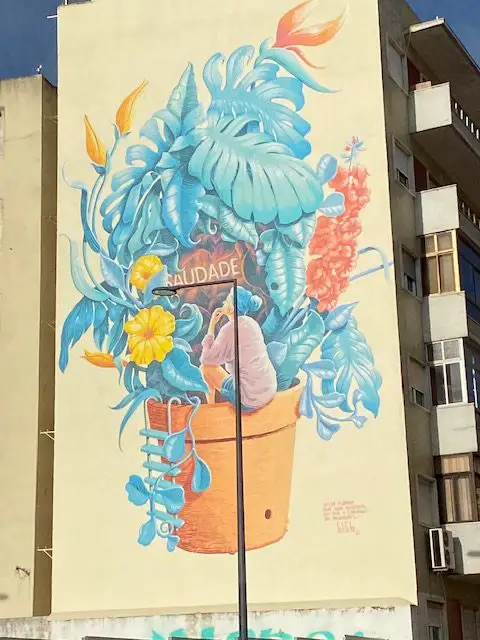
Saudade by Mário Belém can be found at Rua Damasceno Monteiro, 2, near the Miradouro da Graça. See my article A guide to the beautiful Miradouro de Graça viewpoint
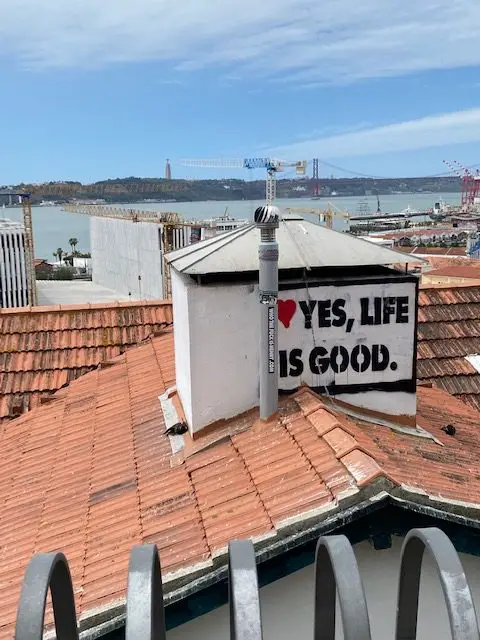
This “”Yes, Life is Good” paste-up on a rooftop is near the Miradoro de Santa Catarina viewpoint.
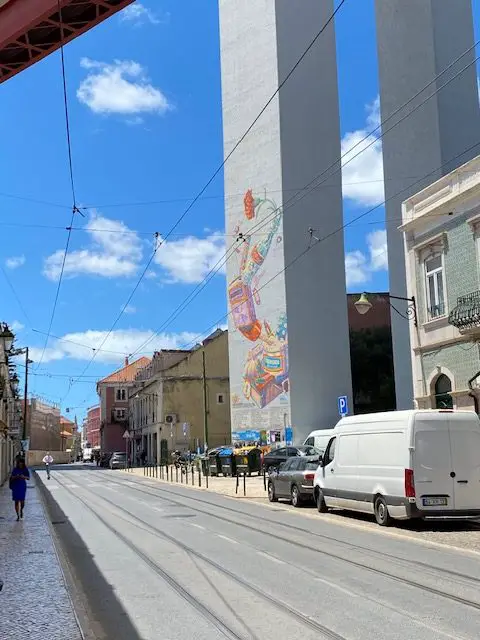
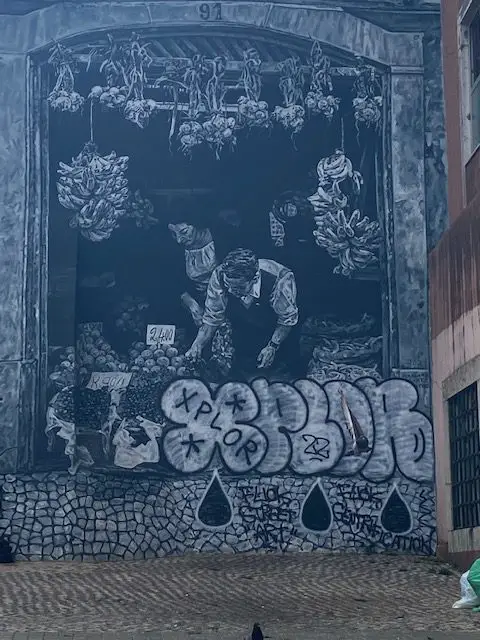
In Barrio Alto, at Rua de O Seculo, 232, French – Portuguese artist Hopare has painted the face of an unknown common lady on the side of a house.
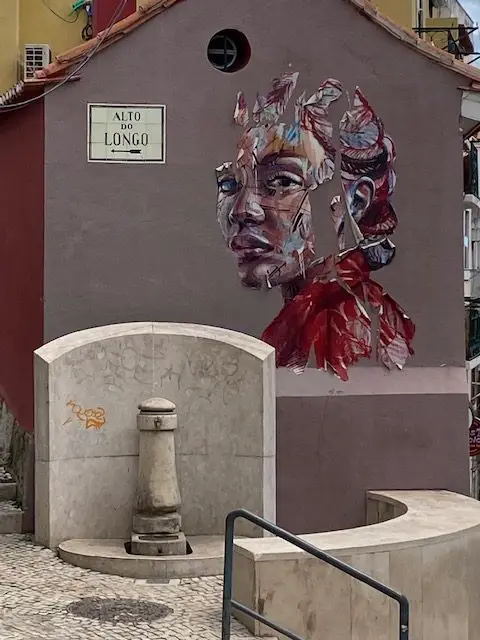
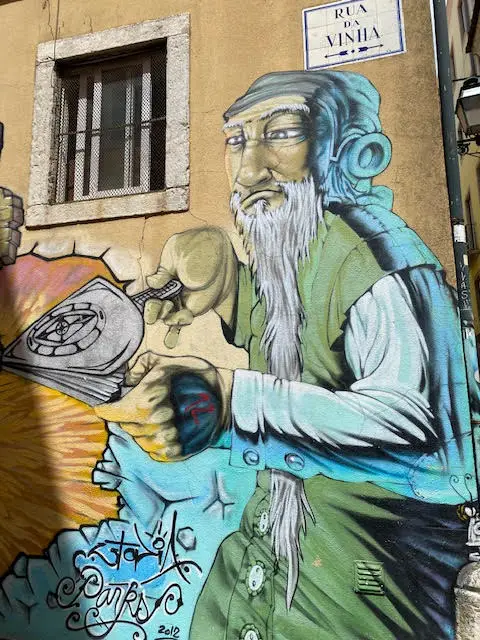
The blue wall is a gallery of street art in Lisbon
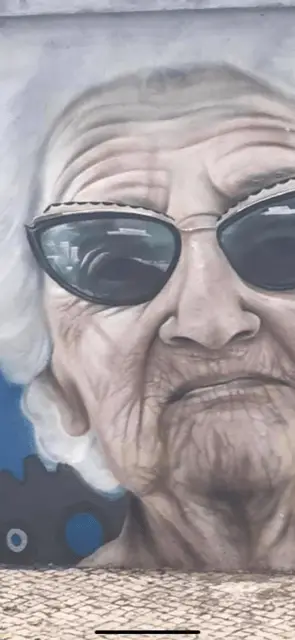
The Blue Wall is a mile-long circular wall surrounding the Julio de Matos Psychiatric Hospital.

Local and international artists were invited to decorate the wall with murals that honor mental health issues and treatment.
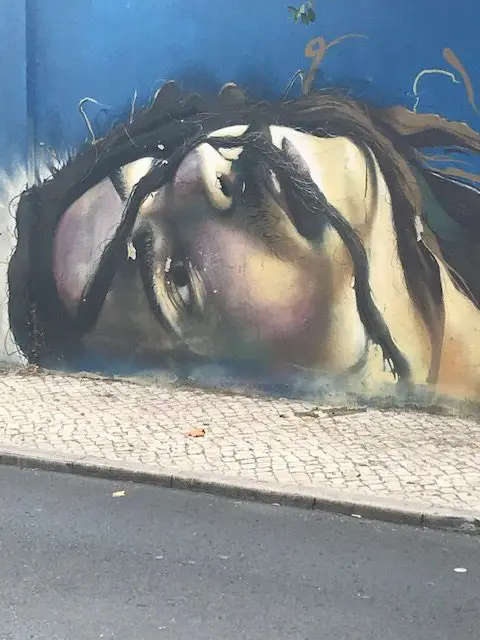
This open-air gallery is located at Rua das Murtas, a 10-minute walk from the Avalade metro station.
The wall is located in a non-touristy residential area, and there is no sidewalk from which to view the wall at certain points. If you love murals, it’s worth seeing though.

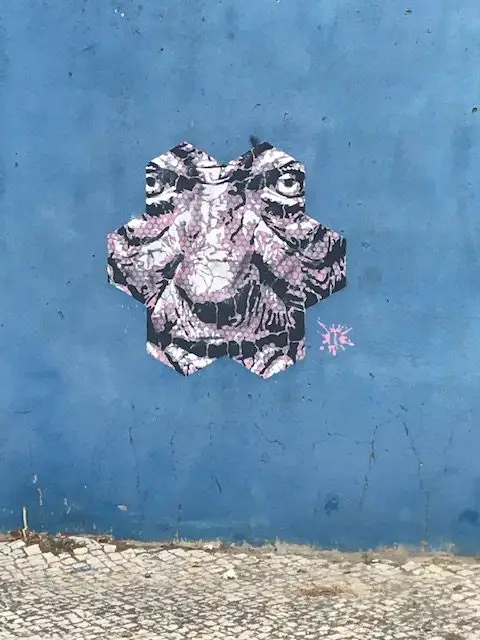
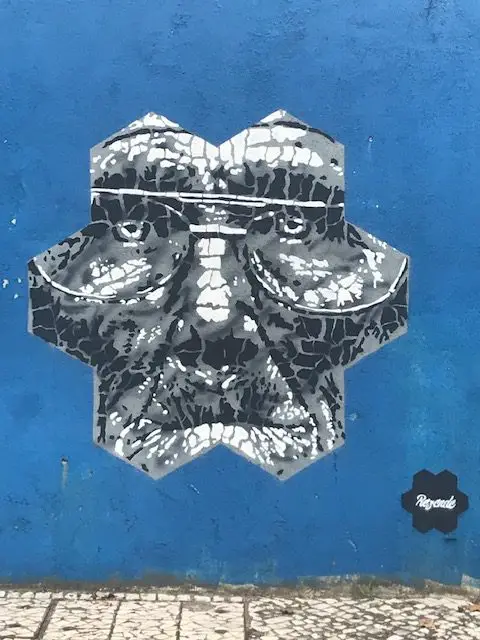
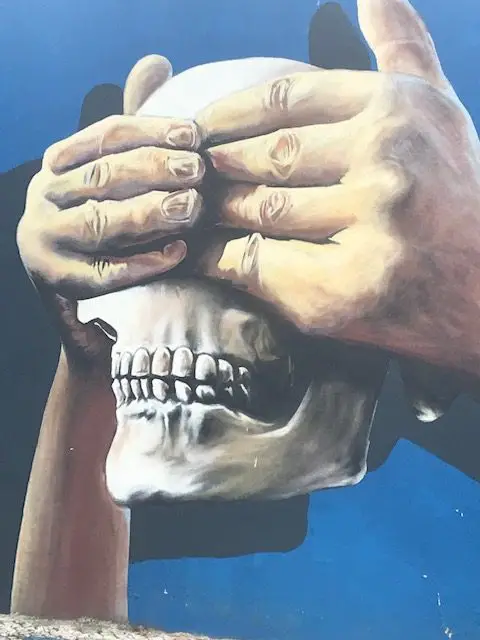
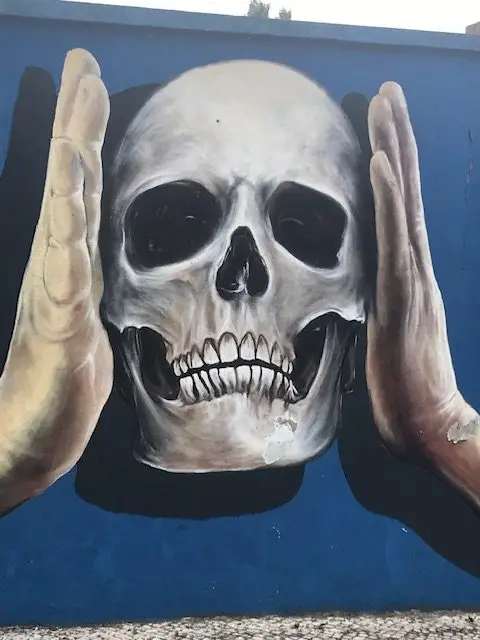
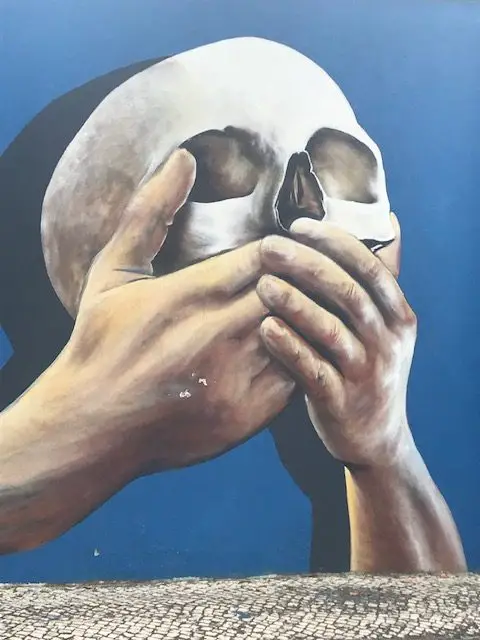
This is but a small sampling of the murals at the Blue Wall.
At the Chão do Loureiro parking garage, each level features urban art.
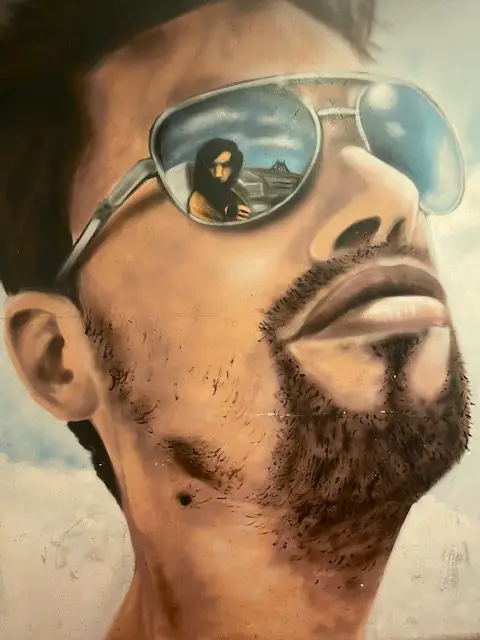
The garage is located at Calcada do Marquês do Tancos, 18. If you are walking, you can take an elevator up to the parking garage. See my article Lisbon’s secret elevators – free shortcuts to the hilltops
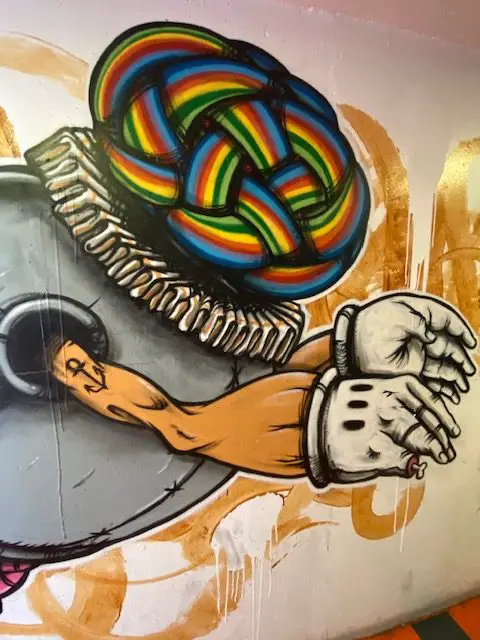
Underground Art in Lisbon
Lisbon features some sort of artwork in every one of its metro stations. The most colorful of all is the Olaias metro station on the red line.

The mosaics at the Picoas metro station are also fantastic.
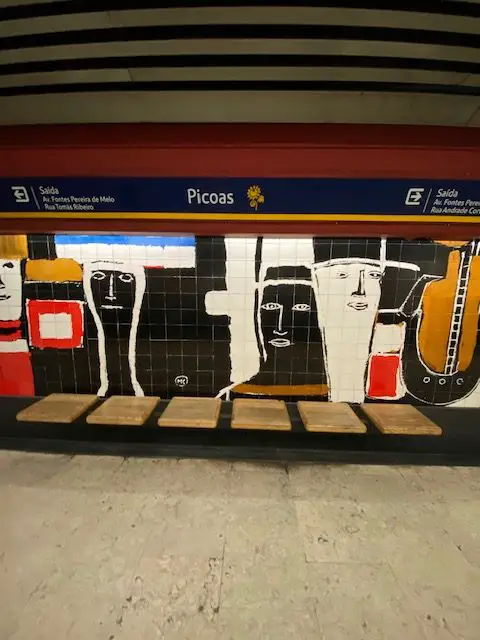
Lisbon Street Art tours
This article barely scratches the surface of Lisbon’s street art scene. There are so many pieces that I did not cover here. There are also a lot of stories and history to be told, so you should really consider a street-art tour while you are in Lisbon.
If you purchase something from a link in this article, such as a street art tour, I will earn a small commission. Thank you for supporting my website, and thank you for reading about “Where to see street art in Lisbon.”